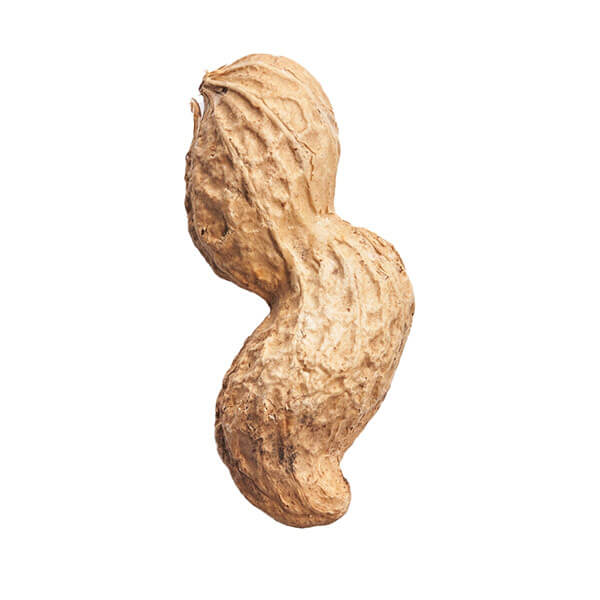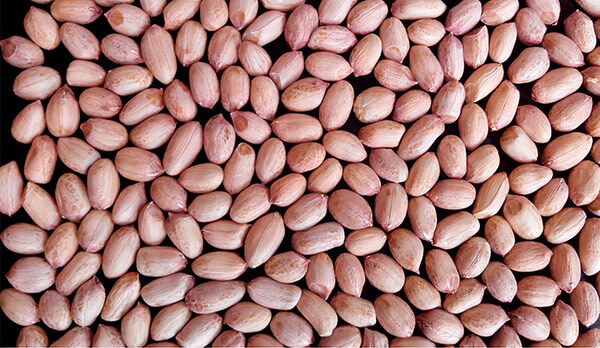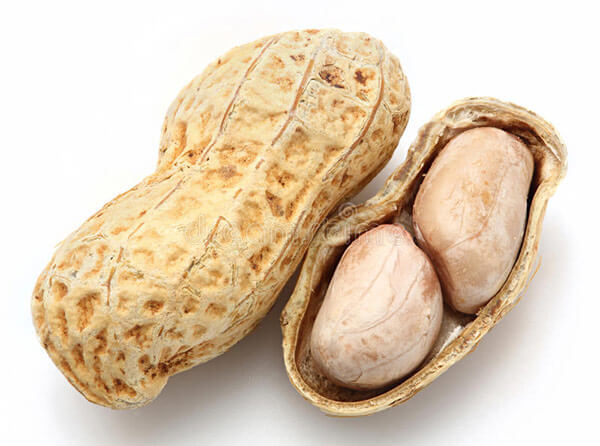

Sustained research using mutation and recombination breeding at BARC resulted in the release of 12 TG varieties for commercial cultivation in the country. TG 1 was the first induced large seed mutant variety developed by X-ray irradiation of ‘Spanish Improved’ variety and released in India. Another direct mutant, ‘TG 3’ was released for Kerala state and became popular in Orissa state. Subsequently, TG 37A, TG 38, TPG 41 and TLG 45 were recently released.

Introduction
The cultivated groundnut (Arachis hypogaea L.) in India is an important oilseed, food and feed crop grown in an area of 6.45 million hectares with a total production of 6.57 million tons. This contributes to 26.6% of world’s groundnut area and 18.5% of world’s groundnut production.
Trombay groundnut varieties are very popular among the farming community and are cultivated throughout the nation in view of their higher yields, early maturity and better water use efficiency. Some of them have an additional useful trait of fresh seed dormancy of 20-30 days thus preventing in situ seed germination due to end season rains when the crop is ready for harvest. This trait is very useful under current changing climatic conditions wherein unpredictable rains are often experienced.

TG development procedure
In most of the groundnut mutation experiments, the objectives were to develop high yielding varieties with early maturity, high harvest index, large seed, high oil content, high shelling percentage, moderate seed dormancy, tolerance to biotic and abiotic stresses and improved seed quality traits. The radiation source used for groundnut breeding in the early years was X-rays. Later, gamma rays took a leading role in mutation breeding. The effective dose of 200-350 Gy gamma rays was close to lethal dose (LD) 50 depending on the factors influencing radio-sensitivity at the time of mutagen treatment.

Yield potential of different TG varieties
Among the released TG varieties, TAG-24, TG-26, TG 37A, TG 38, TG 51 in normal seed class and TKG 19A, Somnath, TPG 41, TLG 45 in large seed class are popular among the farmers of major groundnut growing states such as Gujarat, Andhra Pradesh, Maharashtra, Karnataka, Orissa and Rajasthan and are also becoming popular in West Bengal, Punjab and Tamil Nadu, Madhya Pradesh, Uttar Pradesh and Goa. TAG-24 is the most popular TG variety grown throughout the country & farmers have been realizing the high yielding ability of groundnut varieties by harvesting record groundnut yields in many parts of the country. Hundreds of farmers were harvesting significant improved productivity even up to 7 tonnes/ha when recently released groundnut varieties were introduced in these states.
One of the notable contribution of BARC has been in the development of early maturing confectionery grade large seed groundnut varieties (100-seed weight >60g) suitable for export and Table purpose. Existing large seed varieties were with long duration, longer seed dormancy and low productivity. However the recently released large seed mutant varieties like TBG (TDG) 39, TPG 41 and TLG 45 benefited many farmers by virtue of their earliness, moderate seed dormancy and superior productivity.
Other economic benefits of TG varieties in agriculture & research
Trombay varieties also facilitated farmers to develop newer cropping systems like intercropping groundnut with sweet corn, sugarcane; onion and use of polythene mulch technology for intensive groundnut cultivation. Mutation breeding programme is also complemented with biotechnological approaches. Molecular markers are useful in crop improvement programmes for varietal identification, marker assisted selection, estimating genetic distances, linkage studies, phylogenetic analysis and tagging and cloning of desirable genes.
Specification and features of TG varieties released
| S. No | Variety | Year of release | Pedigree | Released for | Special feature |
|---|---|---|---|---|---|
| 1 | TG 1 | 1973 | X-ray mutant of | Maharashtra | High yield, large seed |
| 2 | TG 3 | 1985 | X-ray mutant of | Kerala | High yield |
| 3 | TG 17 | 1985 | Dark green leaf | Maharashtra | Less number of |
| 4 | Somnath | 1991 | TG 18A X M 13 | Gujarat | Large seed, |
| 5 | TKG 19 A | 1993 | TG 17´TG 1 | Maharashtra | Large seed size, |
| 6 | TG 22 | 1992 | Robut 33-1 X | Bihar | Medium seed size, |
| 7 | TAG 24 | 1992 | TGS 2 X TGE 1 | Maharashtra, Orissa, | Semi-dwarf, earliness, |
| 8 | TG 26 | 1996 | BARCG 1 X TG | Gujarat, North | High partitioning%, |
| 9 | TG 37A | 2004 | TG 25 X TG 26 | Haryana, Rajasthan, | High yield, wider |
| 10 | TG 38 | 2006 | Gamma ray | Orissa, West | High shelling %, stem |
| 11 | TPG 41 | 2004 | TG 28A X TG | All India | Large seed, Medium |
| 12 | TLG 45 | 2007 | TG 19 X TAG | Maharashtra | Large seed, Medium |
Conclusion
In TG breeding, a relatively major portion (67.7%) of the TG base was shared by ‘Spanish Improved variety’ and rest by very few cultivars, which made the TG base so narrow. However, induced mutants themselves or their use in recombination breeding with other mutants and/or cultivars has led to the evolution of several distinct TG lines with improved agronomic traits (Kale et al. 2000). This was made possible by the successful isolation of mutants and by bringing mutant genes into ideal genetic backgrounds. Thus, the judicious use of mutation and recombination breeding has great potential for genetic enhancement in groundnut.
Key Words
Trombay Groundnuts (TG), TAG, Somnath, Mutation breeding, BARC
Reference
A. M. Badigannavar, D. M. Kale, G. S. S. Murty, Genetic base and diversity in groundnut genotypes, Jan 24 2002
Suvendu Mondal, Mutation experiments and recent accomplishments in Trombay groundnuts, Jan 2007
Key Takeaways
• TAG-24 is the most popular TG variety grown throughout the country for high yield
• Somnath variety was identified the best among TG groundnuts in sensory attributes
• Trombay varieties also facilitated farmers to develop newer cropping systems
